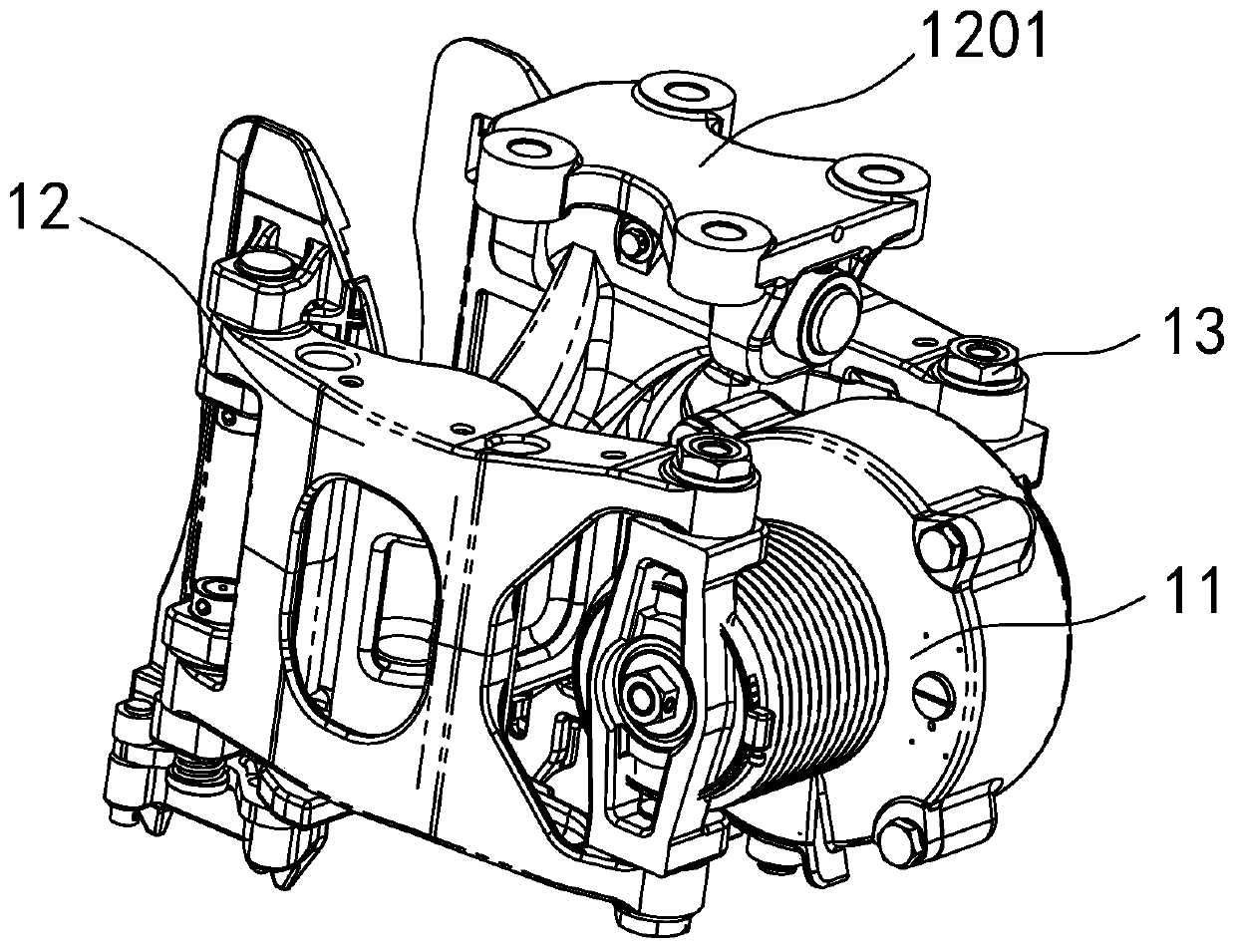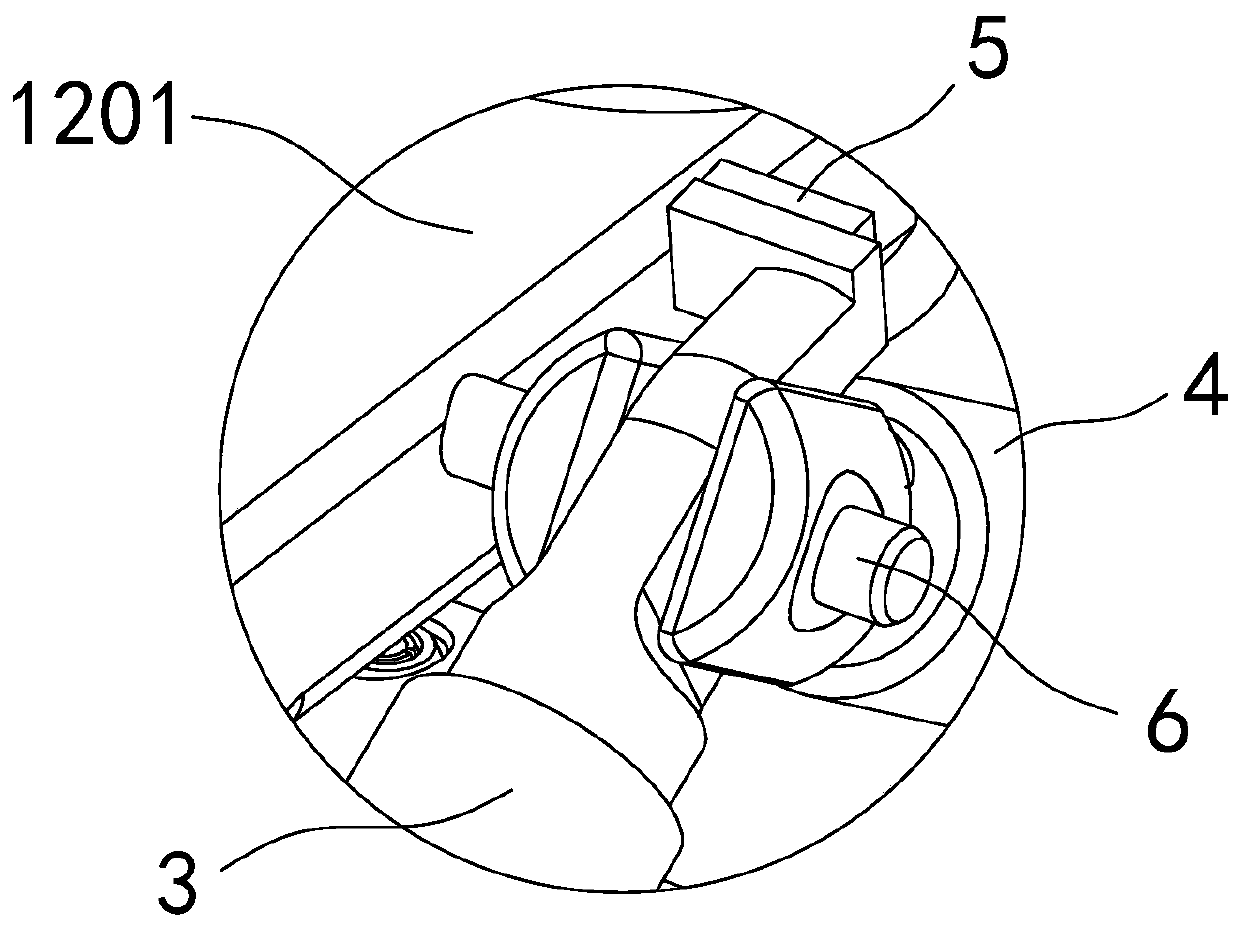Automatic centering device, brake clamp unit, limit alarm method and installation method
A brake caliper and automatic centering technology, which is applied in the field of rail transit, can solve problems such as abnormal wear of brake discs and brake pads, and achieve the effect of preventing abnormal wear
- Summary
- Abstract
- Description
- Claims
- Application Information
AI Technical Summary
Problems solved by technology
Method used
Image
Examples
Embodiment Construction
[0045] Hereinafter, the present invention will be described in detail through exemplary embodiments. However, it should be understood that without further description, elements, structures, and features in one embodiment can also be beneficially combined into other embodiments.
[0046] In the description of the present invention, it should be noted that the terms “upper”, “lower”, “left”, “right”, “inner”, “outer”, etc. indicate the orientation or positional relationship based on the drawings. The positional relationship is only for the convenience of describing the present invention and simplifying the description, rather than indicating or implying that the pointed device or element must have a specific orientation, be constructed and operated in a specific orientation, and therefore cannot be understood as a limitation of the present invention. In addition, the terms "first", "second", "third", and "fourth" are only used for descriptive purposes, and cannot be understood as i...
PUM
 Login to View More
Login to View More Abstract
Description
Claims
Application Information
 Login to View More
Login to View More - R&D
- Intellectual Property
- Life Sciences
- Materials
- Tech Scout
- Unparalleled Data Quality
- Higher Quality Content
- 60% Fewer Hallucinations
Browse by: Latest US Patents, China's latest patents, Technical Efficacy Thesaurus, Application Domain, Technology Topic, Popular Technical Reports.
© 2025 PatSnap. All rights reserved.Legal|Privacy policy|Modern Slavery Act Transparency Statement|Sitemap|About US| Contact US: help@patsnap.com



